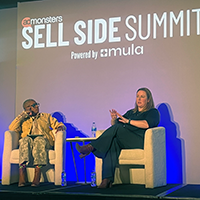If you’re one of those frustrated marketers who enjoy high sign-up rates only to see a spike in unsubscribe requests following the first issue sent, you’re going to need to figure out how to plug this hole to keep your list numbers from sinking. If you have a list that isn’t growing and can’t figure out why, dig into the metrics and see if you can figure out if the subscribers are opting out after the first or second mailing.
Here are the primary causes for a high rate of first-issue unsubscribes:
Poor content: If people are signing up, you can rest assured that the topic is exciting to them. But when they drop off just as fast, it could be a sign that something is wrong with your content. Deliver what you promise and promise only what you can deliver. People aren’t willing to spend time reading useless e-mails. Ask yourself some hard questions: Did you promote a newsletter but only send ads? Are you giving in to the request for more marketing and less information? Is your writer as good as you first thought? Is your design template getting in the way of the message? Ask these hard questions and find the honest answers that will help you get to the bottom of your content problem, fast.
No “Welcome” message, or a bad one: Quite often subscribers will either forget they signed up or not recognize the e-mail is one they asked for. So remind them, by always sending a welcome message immediately after they sign up and by making sure the format is the same as the newsletter to build familiarity. If you already send a welcome message and you’re still getting a high rate of unsubscribes, make sure not only that your welcome message is sincere but that it continues to offer the same enticing content as your sign-up page. IT should be short and sweet—all you need to do is welcome them aboard. But do let new subscribers know about the additional content they now have access to as subscribers, including exclusive promotions and invitations. Of course, you can invite new subscribers to take surveys, download coupons or even provide additional information about themselves in return for even more valuable content, say, limited-edition whitepapers.
Weak or confusing opt-in: A good strong, opt-in will help verify and reinforce a subscriber’s interest. If, however, you are vague or, worse yet, sneaky in how you collect the e-mail address, you have not truly gained this person’s permission. Remember the first rule of e-mail marketing. If you don’t have permission, you’ve got nothing.
Too much time between sign-up and mailing: It’s always a good idea to send an e-mail to new subscribers right away, just to make sure they learn to expect your e-mail. If someone signs up for your quarterly newsletter the day after you just mailed one, it will be four months before they get your next issue. Rather than risk them forgetting, always send new subscribers your latest issue, particularly if your issues are spread out over a period of a month or quarter.
Matt Blumberg is the driving force behind Return Path, an e-mail performance company. Collaborating with him on this project are his colleagues, e-mail strategists Stephanie A. Miller and Tami Monahan Forman. This article was excerpted from their new book, “Sign Me Up! A Marketer’s Guide to Creating E-mail Newsletters That Build Relationships and Boost Sales (iUniverse Inc., 2005) © 2005 Return Path, Inc. All rights reserved.



